Arnav Bhakta
Deep Distance Sensitivity Oracles
Nov 02, 2022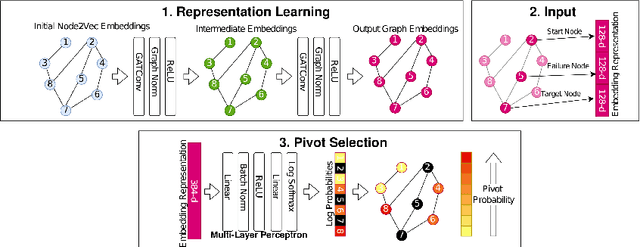
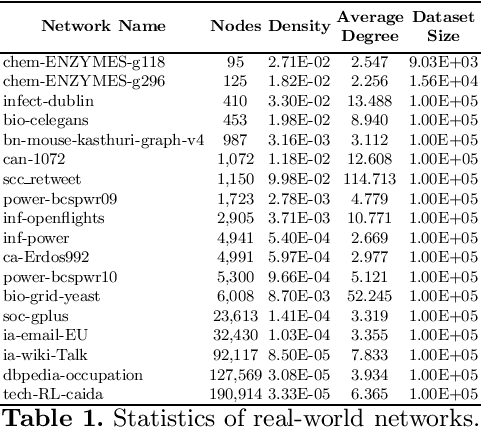
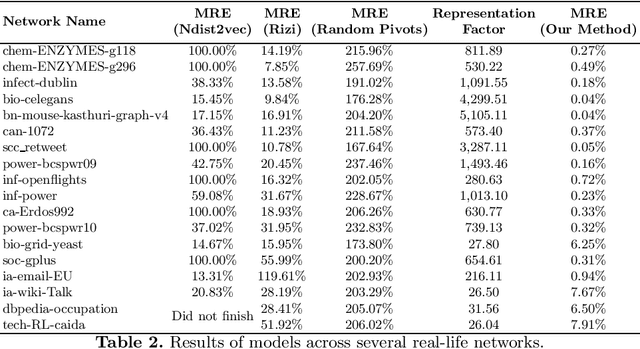
Abstract:One of the most fundamental graph problems is finding a shortest path from a source to a target node. While in its basic forms the problem has been studied extensively and efficient algorithms are known, it becomes significantly harder as soon as parts of the graph are susceptible to failure. Although one can recompute a shortest replacement path after every outage, this is rather inefficient both in time and/or storage. One way to overcome this problem is to shift computational burden from the queries into a pre-processing step, where a data structure is computed that allows for fast querying of replacement paths, typically referred to as a Distance Sensitivity Oracle (DSO). While DSOs have been extensively studied in the theoretical computer science community, to the best of our knowledge this is the first work to construct DSOs using deep learning techniques. We show how to use deep learning to utilize a combinatorial structure of replacement paths. More specifically, we utilize the combinatorial structure of replacement paths as a concatenation of shortest paths and use deep learning to find the pivot nodes for stitching shortest paths into replacement paths.
Comparing Machine Learning-Centered Approaches for Forecasting Language Patterns During Frustration in Early Childhood
Oct 29, 2021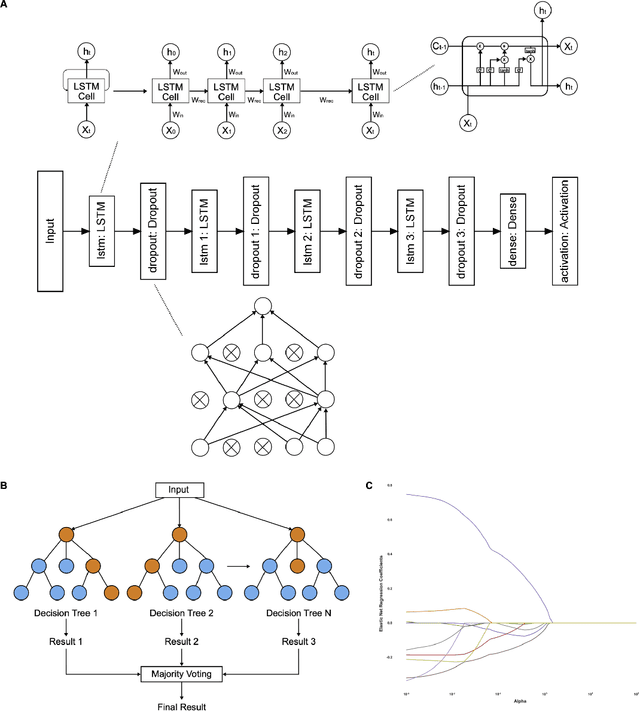
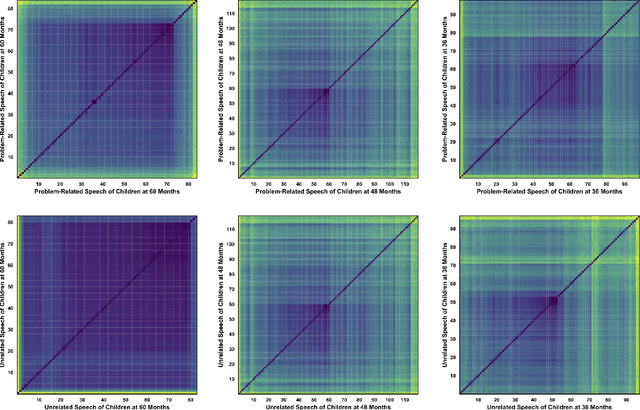
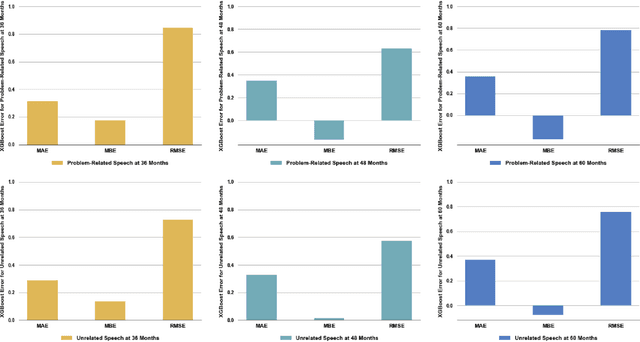
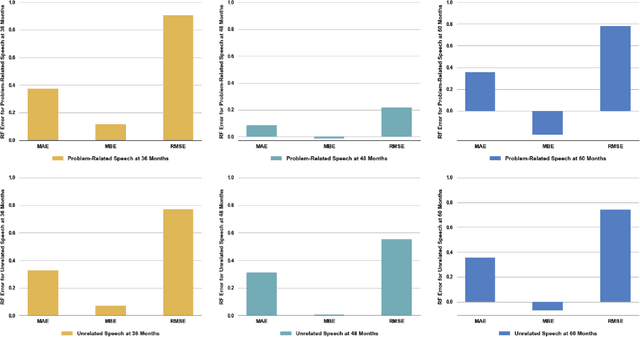
Abstract:When faced with self-regulation challenges, children have been known the use their language to inhibit their emotions and behaviors. Yet, to date, there has been a critical lack of evidence regarding what patterns in their speech children use during these moments of frustration. In this paper, eXtreme Gradient Boosting, Random Forest, Long Short-Term Memory Recurrent Neural Networks, and Elastic Net Regression, have all been used to forecast these language patterns in children. Based on the results of a comparative analysis between these methods, the study reveals that when dealing with high-dimensional and dense data, with very irregular and abnormal distributions, as is the case with self-regulation patterns in children, decision tree-based algorithms are able to outperform traditional regression and neural network methods in their shortcomings.
Creutzfeldt-Jakob Disease Prediction Using Machine Learning Techniques
Aug 11, 2021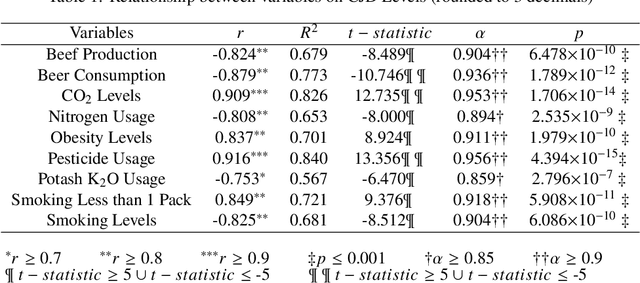
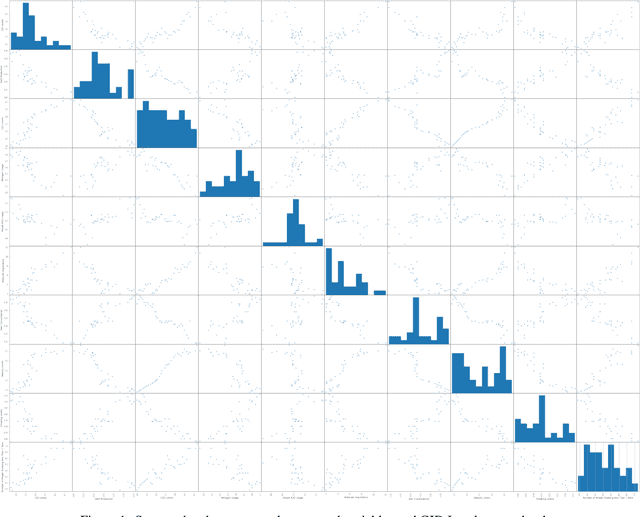
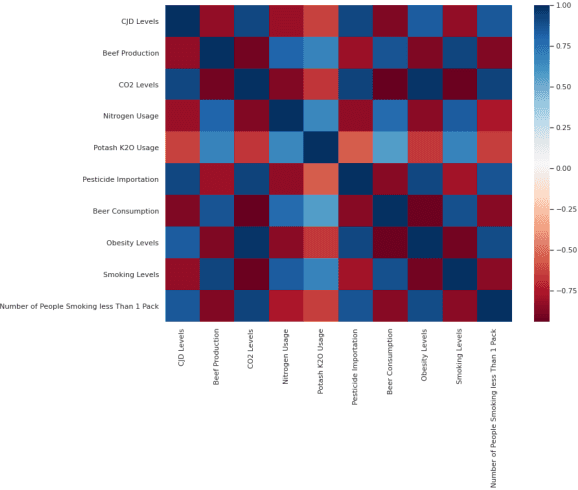

Abstract:Creutzfeldt-Jakob disease (CJD) is a rapidly progressive and fatal neurodegenerative disease, that causes approximately 350 deaths in the United States every year. In specific, it is a prion disease that is caused by a misfolded prion protein, termed $PrP^{Sc}$, which is the infectious form of the prion protein $PrP^{C}$. Rather than being recycled by the body, the $PrP^{Sc}$ aggregates in the brain as plaques, leading to neurodegeneration of surrounding cells and the spongiform characteristics of the pathology. However, there has been very little research done into factors that can affect one's chances of acquiring $PrP^{Sc}$. In this paper, Elastic Net Regression, Long Short-Term Memory Recurrent Neural Network Architectures, and Random Forest have been used to predict Creutzfeldt-Jakob Disease Levels in the United States. New variables were created as data for the models to use on the basis of common factors that are known to affect CJD, such as soil, food, and water quality. Based on the root mean square error (RMSE), mean bias error (MBE), and mean absolute error (MAE) values, the study reveals the high impact of unhealthy lifestyle choices, CO$_{2}$ Levels, Pesticide Usage, and Potash K$_{2}$O Usage on CJD Levels. In doing so, the study highlights new avenues of research for CJD prevention and detection, as well as potential causes.
 Add to Chrome
Add to Chrome Add to Firefox
Add to Firefox Add to Edge
Add to Edge